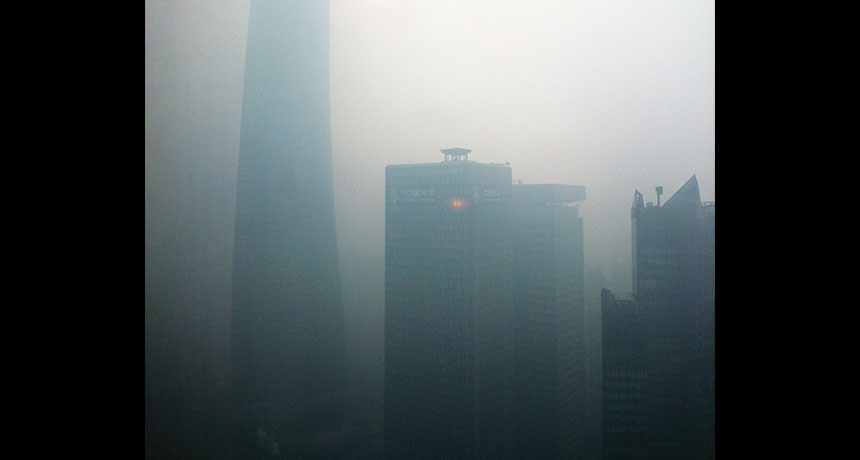Dome effect leaves Chinese megacities under thick haze

Dome effect dōm ih-fekt n.
Airborne black carbon, also called soot, can cause the dome effect by warming the atmosphere’s top layer and blocking sunlight that would otherwise warm the surface air. The reduced temperature difference between the two layers lowers the boundary between them. This effect traps pollution around major cities, worsening air quality, new research suggests.
Researchers observed the dome effect around several of China’s megacities in December 2013. The compressed near-surface layer of the atmosphere led to thick hazes of pollution, the researchers report online March 16 in Geophysical Research Letters. Reducing local black carbon emissions from industry, biofuel burning, diesel vehicles and coal burning would quickly improve air quality around many megacities, the researchers propose.